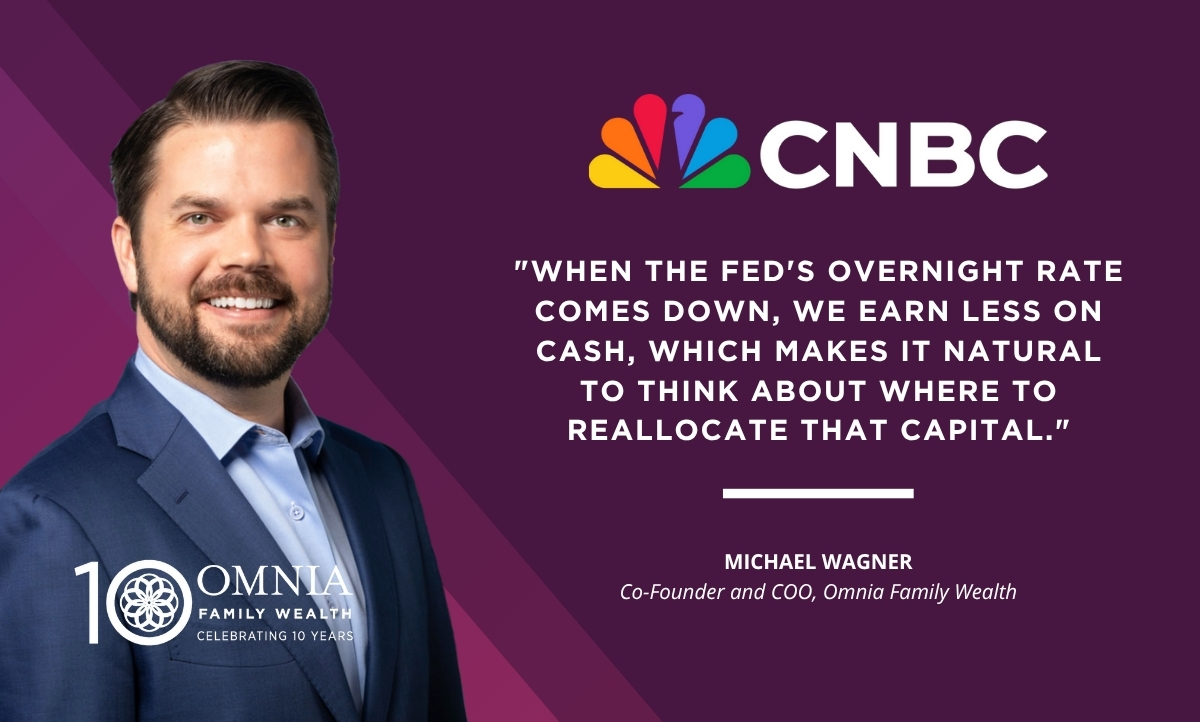
PRIVATE CREDIT: OPPORTUNITY AND THE CRITICAL ROLE OF MANAGER SELECTION
By: Lawrence Muscant, Executive Vice President
WHY PRIVATE CREDIT REMAINS ATTRACTIVE
Private credit remains one of the most talked-about investment opportunities in today’s market. As traditional banks tighten their lending standards amidst increased regulatory scrutiny, a significant financing gap has emerged, particularly in the middle market. Many regional and major banks have scaled back their lending due to market pressures, stricter capital requirements, and balance sheet limitations. This pullback has left numerous healthy, cash-flowing companies in search of capital to finance acquisitions, expansions, and recapitalizations.
Private lenders have filled the gap left by traditional banks, offering customized financing solutions to companies that require speed, flexibility, and confidentiality. These direct lending arrangements enable borrowers to create tailored terms that meet their operational needs. In turn, investors benefit from improved yields and strong protections against potential losses.
This environment has provided an excellent opportunity for investors looking for high current income, structural protection, and portfolio diversification. Private credit usually offers a yield premium of 2% to 4% over similarly rated syndicated loans, which compensates investors for the illiquidity and custom underwriting involved. Most of these loans are floating-rate instruments tied to benchmarks like the Secured Overnight Financing Rate (SOFR), which naturally hedges against inflation and rising interest rates. In a “higher-for-longer” economic climate, this floating-rate feature enables investors to capture additional yield as base rates stay elevated, helping to preserve real returns while minimizing duration risk.
Private credit offers more than just yield; it can provide more predictability and control in a time of increased market volatility. Since these instruments are privately negotiated and not subject to daily market fluctuations, they are shielded from the emotional swings that often affect public debt and equity markets. During recent downturns, such as the sharp equity correction in 2022, private credit strategies continued to deliver mid- to high-single-digit returns. This stability was supported by consistent borrower performance, strong covenant structures, and proactive management.
WHY MANAGER SELECTION MATTERS MORE THAN EVER
While private credit can present attractive opportunities, not all private credit investments are created equal. The key factor that distinguishes strong performance from potential capital loss is often the quality of the manager and their team. In public markets, the availability of liquidity and transparency can sometimes make up for mediocre management. However, in private credit, there is no such safety net. The outcomes for investors rely entirely on the manager’s discipline, underwriting standards, and ability to manage risk. In this asset class, the success of the strategy is closely tied to the manager’s capabilities. In effect, the manager is the strategy, and the quality of the portfolio reflects the quality of the manager.
Most seasoned private credit managers share key traits, notably their focus on sponsor-led transactions. These involve loans to companies backed by experienced private equity sponsors who conduct thorough due diligence and ensure accountability through disciplined underwriting and monitoring. In challenging markets, this often dictates whether or not a credit retains its value.
Another essential characteristic of effective private credit management is strong credit discipline and strict covenant control. The best managers resist the urge to chase higher yields by relaxing their standards or ignoring risks. Instead, they adopt a systematic approach, structuring each deal with enforceable covenants, conservative leverage, and collateral that provides real downside protection. Their objective is not just to deploy capital but to protect it.
When market conditions inevitably change, experience becomes a crucial factor. Seasoned private credit teams know how to navigate through challenging situations, addressing borrower difficulties promptly and effectively. They view defaults and restructurings not as crises, but as part of the normal credit cycle. These teams act swiftly to renegotiate terms, assert lender rights, or take control of assets to protect value, when necessary. The speed and judgment with which a manager responds to these situations can often determine whether investors will recover their principal or suffer a significant loss.
Sector expertise is also a key advantage of strong private credit managers. Those specializing in industries like healthcare, real estate, software, or manufacturing understand unique business models and risks, allowing for more accurate assessments of creditworthiness. They also have established relationships that provide access to exclusive lending opportunities often unavailable to generalist firms. This expertise results in better underwriting, pricing, and investor protection.
The most successful private credit managers employ disciplined and well-established risk management frameworks. They set clear exposure limits, implement layered oversight processes, and utilize continuous monitoring systems to track borrower performance and portfolio health in real time. Their governance structures are designed to identify early warning signs — such as liquidity strain, covenant breaches, or market shifts — and to trigger timely interventions before issues escalate. In these firms, no loan is left unattended; every position is actively managed, assessed, and stress-tested to ensure that risk is controlled and capital is preserved throughout different market cycles.
Ultimately, the key difference between top- and bottom-quartile private credit managers is not just the yield they produce, but their consistency in performance, their ability to preserve capital, and their capacity to recover value during market downturns. In this asset class, returns are influenced much more by discipline and sound judgment than by luck or the use of leverage. The best managers achieve consistency throughout market cycles because they understand how to assess risk rather than merely pursue returns. In private credit, exceptional management is not just a slight advantage, but it is the most important factor to consider.
EVALUATING THE RIGHT PRIVATE CREDIT MANAGER
Selecting the right private credit manager requires careful due diligence. Performance in private credit depends on how well a manager underwrites loans, monitors performance, and responds to stress, rather than market movements. After all, everyone looks like an investment genius when the economy is booming and credit is easy. The true test comes when conditions tighten. What separates the best-of-breed managers from the rest is not how they perform in fair weather, but how they navigate turbulence — protecting capital, preserving value, and finding opportunity, even in adversity. Investors should look beyond yield targets and flashy marketing to assess whether a manager actively manages risk or is merely collecting income while conditions are favorable. Key indicators can reveal a manager’s understanding of their portfolio and whether they have the necessary systems and judgment to protect capital during challenging times. Whether evaluating a manager’s past performance in other funds or reviewing a current fund, investors would be wise to consider the following:
Shifts from Cash Interest to Payment-in-Kind (PIK)
When borrowers stop paying interest in cash and instead add it to the loan balance — known as “payment-in-kind” or PIK — it can signal financial stress.
While occasional PIKs can be useful short-term, a rising trend suggests borrowers may be low on cash and struggling to meet obligations. “Forced PIKs,” where lenders capitalize unpaid interest, typically indicate deeper distress. This “PIK buildup” can make a portfolio appear healthier on paper, even if actual cash flow is lacking. Skilled managers use PIKs sparingly and only when a borrower’s growth prospects are strong and cash recovery is realistic.
Amend & Extend Transactions
A key warning sign is the frequent use of “amend and extend” deals, where lenders delay maturity dates or relax loan terms to give borrowers extra time. While this can be wise on occasion — like extending a lease for a reliable tenant — overuse signals that borrowers may struggle to refinance or repay. Managers who rely too heavily on these extensions may seem to maintain a stable portfolio but are often just delaying losses. The best managers use amendments sparingly and only when they genuinely strengthen the lender’s position.
Non-Accrual Rate
The non-accrual rate, which reflects the percentage of loans not generating interest, is a key indicator of credit stress. When a loan is non-accrual, it means the manager no longer expects to collect interest due to borrower defaults. A rising non-accrual rate indicates that more companies in the portfolio are struggling. Effective managers identify these problems early and act, like restructuring loans or recovering assets, before issues worsen. This proactive approach, akin to a landlord addressing tenant issues promptly, sets good credit managers apart from those who are reactive.
Loan-to-Value (LTV) Changes and Collateral Coverage
Changes in loan-to-value (LTV) ratios indicate how much protection lenders have as market conditions shift. LTV measures debt relative to the value of the borrower’s assets. When asset values drop and loan balances remain the same, LTV rises, reducing the lender’s safety margin. Experienced managers monitor these changes closely, updating valuations and adjusting risk exposure proactively.
They may require more collateral or lower loan sizes to maintain protection. In contrast, less disciplined managers wait until valuations decline, facing limited options and weaker recovery prospects.
CONCLUSION
Private credit may be the current “shiny object” that everyone is eager to invest in, but it’s essential for investors to recognize that not all private credit investments are the same. Behind every impressive return projection and polished marketing presentation lies a set of real-world risks that only thorough due diligence can reveal.
Before committing any capital, investors should look beyond the sales pitch and focus on the substance of the investment. It’s important to ask challenging questions and examine data related to PIK interest, covenant renegotiations, and non-accruals. Investors should also understand how managers respond to stress, monitor borrowers, and maintain discipline when market conditions become more challenging. The objective isn’t to eliminate risk, but to partner with those who understand how to manage it effectively.
When capital is entrusted to managers with proven judgment, aligned interests, and a disciplined approach to risk management, private credit can be a powerful and stabilizing component of a diversified portfolio. Those who take the time to delve deeper, demanding transparency and substance over superficial marketing, will be better positioned to seize the genuine opportunities this asset class provides.
IMPORTANT INFORMATION
The information provided is for educational and informational purposes only and does not constitute investment advice and it should not be relied on as such. It should not be considered a solicitation to buy or an offer to sell a security. It does not take into account any investor’s particular investment objectives, strategies, tax status or investment horizon. You should consult your attorney or tax advisor.
The views expressed in this commentary are subject to change based on market and other conditions. These documents may contain certain statements that may be deemed forward looking statements. Please note that any such statements are not guarantees of any future performance and actual results or developments may differ materially from those projected. Any projections, market outlooks, or estimates are based upon certain assumptions and should not be construed as indicative of actual events that will occur.
All information has been obtained from sources believed to be reliable, but its accuracy is not guaranteed. There is no representation or warranty as to the current accuracy, reliability or completeness of, nor liability for, decisions based on such information and it should not be relied on as such. No investment strategy or risk management technique can guarantee returns or eliminate risk in any market environment. All investments include a risk of loss that clients should be prepared to bear. The principal risks of Omnia Family Wealth strategies are disclosed in the publicly available Form ADV Part 2A.
Omnia Family Wealth, LLC (“Omnia Family Wealth”) is a registered investment advisor. Advisory services are only offered to clients or prospective clients where Omnia and its representatives are properly licensed or exempt from licensure. Information in this message is for the intended recipient[s] only. Please visit our website https://omniawealth.com for important disclosures. For current Omnia Family Wealth information, please visit the Investment Adviser Public Disclosure website at www.adviserinfo.sec.gov.




